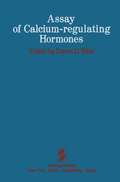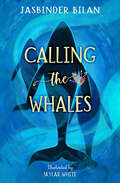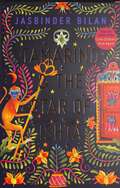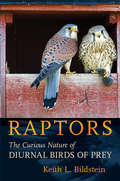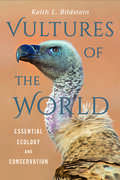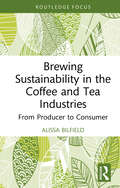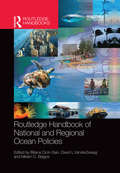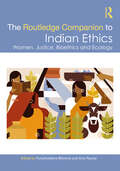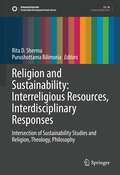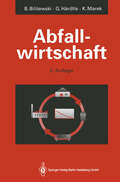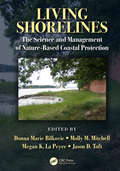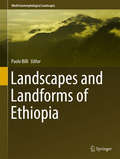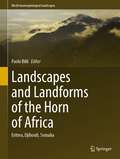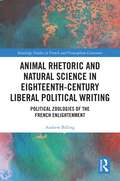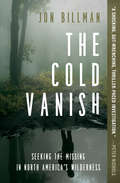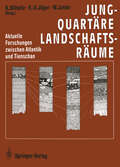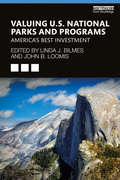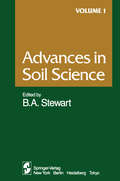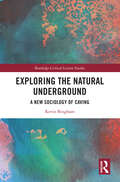- Table View
- List View
Assay of Calcium-regulating Hormones
by Daniel D. BikleThe ability to measure accurately the hormones regulating calcium homeosta sis is the fundamental first step toward understanding the roles these hormones play in health and disease. Techniques for such measurements have only been available for the past 10 years or so and remain in a state of rapid development. Sensitive parathyroid hormone (PTH) radioimmunoassays appeared in the early 1970s, and with them came a whole new appreciation for the prevalence and implications of hyperparathyroidism, primary or secondary, in the popu lation. The calcitonin (CT) radioimmunoassay came later and achieved rapid success in the. diagnosis of a previously poorly understood cancer, medullary carcinoma of the thyroid, frequently associated with the familial multiple endo crine neoplasia type 2 syndromes (a and b). As the sensitivity of the calcitonin radioimmunoassay has improved, our understanding of the role of calcitonin in normal physiological processes has increased. The knowledge that vitamin D must be metabolized to produce its biologic effects is only 15 years old. This has had profound implications in our understanding of a variety of metabolic bone, kidney, and gastrointestinal diseases. Assays to measure the major cir culating form of vitamin D, 25-hydroxyvitamin D, were described 10 years ago. Assays for the other metabolites, in particular, 1,25-dihydroxyvitamin D, were described even more recently. As of today, we know of many vitamin D metabolites and have developed the techniques to measure most of them; how ever, many questions remain concerning their physiological role.
Calling the Whales
by Jasbinder BilanWhen a majestic whale is stranded near their Scottish hometown, Tulsi and Satchen are determined to save it. But after their boat capsizes in a storm, they’re left dangerously adrift. Just as all seems lost, help arrives from an unexpected source … An adventure with a powerful eco message at its heart.
Tamarind & the Star of Ishta (PDF)
by Jasbinder BilanFrom the author of the Costa Award-winning Asha & the Spirit Bird comes a breathtaking, magical adventure ... WINNER OF THE INDIE CHILDREN'S BOOK AWARD LONGLISTED FOR THE BLUE PETER BOOK AWARD 'I absolutely adored it ... an achingly beautiful story' Sita Brahmachari 'A lush, gorgeous setting in a novel as vivid and original as her Costa-winning debut.' The Guardian 'Beautifully written, richly atmospheric and touchingly spiritual, this brief novel sparkles like a polished gem' Daily Mail Tamarind never knew her Indian mum, who died soon after she was born. So when she arrives at her ancestral home, a huge mansion in the Himalayas surrounded by luxuriant gardens, she's full of questions for her extended family. But instead of answers, she finds an ominous silence - and a trickle of intriguing clues: an abandoned hut, a friendly monkey, a glowing star ring, and a strange girl in the garden who calls herself Ishta.
Raptors: The Curious Nature of Diurnal Birds of Prey
by Keith L. BildsteinRaptors are formally classified into five families and include birds—such as eagles, ospreys, kites, true hawks, buzzards, harriers, vultures, and falcons—that are familiar and recognized by many observers. These diurnal birds of prey are found on every continent except Antarctica and can thrive in seemingly inhospitable spots such as deserts and the tundra. They have powerful talons and hooked beaks for cutting and tearing meat, and keen binocular vision to aid in their hunting prowess. Because of their large size, distinctive feeding habits, and long-distance flight patterns, raptors intrigue humans and have been the subject of much general interest as well as extensive scientific research. Keith L. Bildstein has watched and studied raptors on five continents and is well prepared to explain their critical importance, not only as ecological entities but also as inspirational tokens across natural and human-dominated landscapes. His book offers a comprehensive and accessible account of raptors, including their evolutionary history, their relationships to other groups of birds, their sensory abilities, their general natural history, their breeding ecology and feeding behavior, and threats to their survival in a human-dominated world. Biologically sound but readable, Raptors is a nontechnical overview of this captivating group. It will allow naturalists, birders, hawk-watchers, science educators, schoolchildren, and the general public, along with new students in the field of raptor biology, to understand and appreciate these birds, and in so doing better protect them.
Vultures of the World: Essential Ecology and Conservation
by Keith L. BildsteinIn Vultures of the World, Keith L. Bildstein provides an engaging look at vultures and condors, seeking to help us understand these widely recognized but underappreciated birds. Bildstein's latest work is an inspirational and long overdue blend of all things vulture. Based on decades of personal experience, dozens of case studies, and numerous up-to-date examples of cutting-edge science, this book introduces readers to the essential nature of vultures and condors. Not only do these most proficient of all vertebrate scavengers clean up natural and man-made organic waste but they also recycle ecologically essential elements back into both wild and human landscapes, allowing our ecosystems to function successfully across generations of organisms. With distributions ranging over more than three-quarters of all land on five continents, the world's twenty-three species of scavenging birds of prey offer an outstanding example of biological diversity writ large. Included in the world's species fold are its most abundant large raptors—several of its longest lived birds and the most massive of all soaring birds. With a fossil record dating back more than fifty million years, vultures and condors possess numerous adaptions that characteristically serve them well but at times also make them particularly vulnerable to human actions. Vultures of the World is a truly global treatment of vultures, offering a roadmap of how best to protect these birds and their important ecology.
Brewing Sustainability in the Coffee and Tea Industries: From Producer to Consumer (Earthscan Food and Agriculture)
by Alissa BilfieldThis book focuses on the often intertwined industries of coffee and tea, using accounts of single producer communities to highlight the transformation from plantation-style colonial agriculture towards systems that now claim to produce social and environmental benefits from the farm to the cup. Focusing on the dynamics of farmers' experiences producing coffee and tea ethically and sustainably at origin, the book shows how these values are transmitted and reinforced throughout the value chain. Exploring tandem case studies of fair trade cooperatives in Guatemala and Sri Lanka, it provides an insight into the creation of more sustainable value chains from producer to consumer in the global marketplace, incorporating the perspectives of coffee exporters, importers, roasters, and café owners. This book is focused on the prospects of the specialty movement in food as a catalyst for forging more authentic, just, and sustainable supply chains that consider both people and the environment. This book will be of great interest to students and scholars of food and agriculture, sustainable food systems and supply chains, the fair trade movement, sustainable development, and social entrepreneurship and social innovation.
Brewing Sustainability in the Coffee and Tea Industries: From Producer to Consumer (Earthscan Food and Agriculture)
by Alissa BilfieldThis book focuses on the often intertwined industries of coffee and tea, using accounts of single producer communities to highlight the transformation from plantation-style colonial agriculture towards systems that now claim to produce social and environmental benefits from the farm to the cup. Focusing on the dynamics of farmers' experiences producing coffee and tea ethically and sustainably at origin, the book shows how these values are transmitted and reinforced throughout the value chain. Exploring tandem case studies of fair trade cooperatives in Guatemala and Sri Lanka, it provides an insight into the creation of more sustainable value chains from producer to consumer in the global marketplace, incorporating the perspectives of coffee exporters, importers, roasters, and café owners. This book is focused on the prospects of the specialty movement in food as a catalyst for forging more authentic, just, and sustainable supply chains that consider both people and the environment. This book will be of great interest to students and scholars of food and agriculture, sustainable food systems and supply chains, the fair trade movement, sustainable development, and social entrepreneurship and social innovation.
Routledge Handbook of National and Regional Ocean Policies (Routledge Environment and Sustainability Handbooks)
by Biliana Cicin-Sain, David L. VanderZwaag, and Miriam C. BalgosThis comprehensive handbook, prepared by leading ocean policy academics and practitioners from around the world, presents in-depth analyses of the experiences of fifteen developed and developing nations and four key regions of the world that have taken concrete steps toward cross-cutting and integrated national and regional ocean policy. All chapters follow a common framework for policy analysis. While most coastal nations of the world already have a variety of sectoral policies in place to manage different uses of the ocean (such as shipping, fishing, oil and gas development), in the last two decades, the coastal nations covered in the book have undertaken concerted efforts to articulate and implement an integrated, ecosystem-based vision for the governance of ocean areas under their jurisdiction. This includes goals and procedures to harmonize existing uses and laws, to foster sustainable development of ocean areas, to protect biodiversity and vulnerable resources and ecosystems, and to coordinate the actions of the many government agencies that are typically involved in oceans affairs. The book highlights the serious conflicts of use in most national ocean zones and the varying attempts by nations to follow the prescriptions emanating from the 1982 UN Law of the Sea Convention and the outcomes of the 1992, 2002, and 2012 sustainable development summits. The interrelationship among uses and processes in the coast and ocean requires that ocean governance be integrated, precautionary, and anticipatory. Overall, the book provides a definitive state-of-the-art review and analysis of national and regional ocean policies around the world.
The Routledge Companion to Indian Ethics: Women, Justice, Bioethics and Ecology
by Purushottama Bilimoria Amy RaynerThis companion volume focuses on the application and practical ramifications of Indian ethics. Here Indian dharma ethics is moved from its preeminent religious origins and classical metaethical proclivity to, what Kant would call, practical reason – or in Aristotle’s poignant terms, ēhikos and phronēis –and in more modern parlance normative ethics. Our study examines a wide range of social and normative challenges facing people in such diverse areas as women’s rights, infant ethics, politics, law, justice, bioethics and ecology. As a contemporary volume, it builds linkages between existing theories and emerging moral issues, problems and questions in today’s India in the global arena. The volume brings together contributions from some 40 philosophers and contemporary thinkers on practical ethics, exploring both the scope and boundaries or limits of ethics as applied to everyday and real-life concerns and socio-economic challenges facing India in the context of a troubled globalizing world. As such, this collection draws on multiple forms of writing and research, including narrative ethics, interviews, critical case studies and textual analyses.The book will be of interest to scholars, researchers and students of Indian philosophy, Indian ethics, women and infant issues, social justice, environmental ethics, bioethics, animal ethics and cross-cultural responses to dominant Western moral thought. It will also be useful to researchers working on the intersection of Gandhi, sustainability, ecology, theology, feminism, comparative philosophy and dharma studies.
The Routledge Companion to Indian Ethics: Women, Justice, Bioethics and Ecology
by Purushottama Bilimoria Amy RaynerThis companion volume focuses on the application and practical ramifications of Indian ethics. Here Indian dharma ethics is moved from its preeminent religious origins and classical metaethical proclivity to, what Kant would call, practical reason – or in Aristotle’s poignant terms, ēhikos and phronēis –and in more modern parlance normative ethics. Our study examines a wide range of social and normative challenges facing people in such diverse areas as women’s rights, infant ethics, politics, law, justice, bioethics and ecology. As a contemporary volume, it builds linkages between existing theories and emerging moral issues, problems and questions in today’s India in the global arena. The volume brings together contributions from some 40 philosophers and contemporary thinkers on practical ethics, exploring both the scope and boundaries or limits of ethics as applied to everyday and real-life concerns and socio-economic challenges facing India in the context of a troubled globalizing world. As such, this collection draws on multiple forms of writing and research, including narrative ethics, interviews, critical case studies and textual analyses.The book will be of interest to scholars, researchers and students of Indian philosophy, Indian ethics, women and infant issues, social justice, environmental ethics, bioethics, animal ethics and cross-cultural responses to dominant Western moral thought. It will also be useful to researchers working on the intersection of Gandhi, sustainability, ecology, theology, feminism, comparative philosophy and dharma studies.
Religion and Sustainability: Intersection of Sustainability Studies and Religion, Theology, Philosophy (Sustainable Development Goals Series)
by Purushottama Bilimoria Rita D. ShermaThis volume brings sustainability studies into creative and constructive conversation with actions, practices, and worldviews from religion and theology supportive of the vision and work of the UN SDGs. It features more than 30 chapters from scholars across diverse disciplines, including economics, ethics, theology, sociology, ritual studies, and visual culture. This interdisciplinary content presents new insights for inhibiting ecospheric devastation, which is inextricably linked to unsustainable financial, societal, racial, geopolitical, and cultural relationships. The chapters show how humanistic elements can enable the establishment of sustainable ways of thinking, feeling, and acting. This includes the aesthetic and emotive dimensions of life. The contributors cover such topics as empowering women and girls to systemically reverse climate change; nurturing interreligious peace; decolonizing landscapes; and promoting horticulture, ecovillages, equity, and animal ethics. Coverage integrates a variety of religious and theological perspectives. These include Buddhism, Judaism, Hinduism, Islam, Christianity, and other traditions.To enable the restoration and flourishing of the ecosystems of the biosphere, human societies need to be reimagined and reordered in terms of economic, cultural, religious, racial, and social equitability. This volume illustrates transformative paradigms to help foster such change. It introduces new principles, practices, ethics, and insights to the discourse. This work will appeal to students, scholars, and professionals researching the ethical, moral, social, cultural, psychological, developmental, and other social scientific impacts of religion on the key markers of sustainability.
Abfallwirtschaft: Eine Einführung
by Bernd Bilitewski Georg Härdtle Klaus MarekDas vollständige deutschsprachige Werk zum Thema Abfall, das alle Fragen der Umweltbeauftragten auf kommunaler Ebene beantwortet. Gleichzeitig eignet sich das Buch hervorragend als Lehrbuch für Fachhochschulen und Universitäten. In der zweiten Auflage wurden auch abgesicherte Erfahrungen aus den neuen Bundesländern ausgewertet. Vor allem die Diskussion um das Duale System wird mit diesem Werk auf eine solide Basis gestellt.
Living Shorelines: The Science and Management of Nature-Based Coastal Protection (CRC Marine Science)
by Donna Marie Bilkovic Molly M. Mitchell Megan K. La Peyre Jason D. ToftKey features: Makes recommendations on the correct usage of the term living shorelines Offers guidance for shoreline management in the future Includes lessons learned from the practice of shoreline restoration/conservation Synthesizes regional perspectives to identify strategies for the successful design and implementation of living shorelines Reviews specific design criteria for successful implementation of living shorelines Provides detailed discussions of social, regulatory, scientific and technical considerations to justify and design living shoreline projects Living Shorelines: The Science and Management of Nature-based Coastal Protection compiles, synthesizes and interprets the current state of the knowledge on the science and practice of nature-based shoreline protection. This book will serve as a valuable reference to guide scientists, students, managers, planners, regulators, environmental and engineering consultants, and others engaged in the design and implementation of living shorelines. This volume provides a background and history of living shorelines, understandings on management, policy, and project designs, technical synthesis of the science related to living shorelines including insights from new studies, and the identification of research needs, lessons learned, and perspectives on future guidance. International perspectives are presented from leading researchers and managers in the East, West and Gulf coasts of the United States, Europe, Canada, and Australia that are working on natural approaches to shoreline management. The broad geographic scope and interdisciplinary nature of contributing authors will help to facilitate dialogue and transfer knowledge among different disciplines and across different regions. This book will provide coastal communities with the scientific foundation and practical guidance necessary to implement effective shoreline management that enhances ecosystem services and coastal resilience now and into the future.
Living Shorelines: The Science and Management of Nature-Based Coastal Protection (CRC Marine Science)
by Donna Marie Bilkovic Molly M. Mitchell Megan K. La Peyre Jason D. ToftKey features: Makes recommendations on the correct usage of the term living shorelines Offers guidance for shoreline management in the future Includes lessons learned from the practice of shoreline restoration/conservation Synthesizes regional perspectives to identify strategies for the successful design and implementation of living shorelines Reviews specific design criteria for successful implementation of living shorelines Provides detailed discussions of social, regulatory, scientific and technical considerations to justify and design living shoreline projects Living Shorelines: The Science and Management of Nature-based Coastal Protection compiles, synthesizes and interprets the current state of the knowledge on the science and practice of nature-based shoreline protection. This book will serve as a valuable reference to guide scientists, students, managers, planners, regulators, environmental and engineering consultants, and others engaged in the design and implementation of living shorelines. This volume provides a background and history of living shorelines, understandings on management, policy, and project designs, technical synthesis of the science related to living shorelines including insights from new studies, and the identification of research needs, lessons learned, and perspectives on future guidance. International perspectives are presented from leading researchers and managers in the East, West and Gulf coasts of the United States, Europe, Canada, and Australia that are working on natural approaches to shoreline management. The broad geographic scope and interdisciplinary nature of contributing authors will help to facilitate dialogue and transfer knowledge among different disciplines and across different regions. This book will provide coastal communities with the scientific foundation and practical guidance necessary to implement effective shoreline management that enhances ecosystem services and coastal resilience now and into the future.
Landscapes and Landforms of Ethiopia (World Geomorphological Landscapes #1)
by Paolo BilliThis book provides a succinct but comprehensive presentation of key geomorphological locations and topics including information about geomorphological heritage and maps to visit the most important sites.Apart from often being remarkably scenic, landscapes reveal stories that often can be traced back in time tens of million years and include unique events. This is particularly true for Ethiopia where spectacular examples of different landforms are present. Its geomorphology varies from highlands, marked by high volcanoes and incised by deep river gorges, to the rift valley lakes endorheic systems and the below sea level lowlands with characteristic landscapes which are unique in the world. Landscapes and Landforms of Ethiopia highlights all these topics including essential information about geology and tectonic framework, past and present climate, hydrology, geographical regions and long-term geomorphological history. It is a highly informative book, providing insight for readers with an interest in geography and geomorphology.
Landscapes and Landforms of the Horn of Africa: Eritrea, Djibouti, Somalia (World Geomorphological Landscapes)
by Paolo BilliThis book focuses on regions for which until now the geomorphology was very poorly studied and relatively unknown. Nevertheless, the landforms and landscapes of the Horn of Africa are highly attractive, diverse and in a few cases unique, since they span very different environments, from highland plateaus and mountains to lowlands (even below sea level) and coastlines with a high degree of diversity and from monsoon to arid climate conditions. The main topics addressed in the book include the links between the geological evolution and the current large scale geomorphology of the Horn of Africa; the large differences between the highlands and lowlands climate, river hydrology and their variation through time within a climate change perspective. This part of the world was home of the very first hominids. The landscape in which they lived and evolved throughout the Pleistocene is described in comparison with the arid and inhospitable, though immensely scenic, environment of today. Perennial and ephemeral rivers with very different morphology, processes, and hydrology drain the area, and, in combination with the past and recent uplift, substantially contributed to provide the region with peculiar landscapes and landforms. Long lasting weathering and erosion processes result in a typical inselberg landscape such as the Bur region, or the currently exposed flatland of old peneplain surfaces. Their changes through time, induced by both natural and anthropogenic factors, are addressed by a couple of case studies. Though the region has few inhabitants, they had to struggle to find their livelihood in a land that offers poor resources. This resulted in landscape change and land degradation. Examples of human impact on the landscape are presented at different scales. This book provides readers interested in geography and geomorphology with essential scientific and educational information on the Landscapes and Landforms of Eritrea, Djibouti and Somalia through simple, though scientifically, rigorous texts illustrated with several color maps and photos. One main prerogative of this book is therefore to give an insight into a region of the world where, for geographical and historical constraints, geomorphological investigation was very limited, thus enriching its intrinsic informative value.
Animal Rhetoric and Natural Science in Eighteenth-Century Liberal Political Writing: Political Zoologies of the French Enlightenment (Routledge Studies in French and Francophone Literature)
by Andrew BillingOur tendency to read French Enlightenment political writing from a narrow disciplinary perspective has obscured the hybrid character of political philosophy, rhetoric, and natural science in the period. As Michèle Duchet and others have shown, French Enlightenment thinkers developed a philosophical anthropology to support new political norms and models. This book explores how five important eighteenth-century French political authors—Rousseau, Diderot, La Mettrie, Quesnay, and Rétif de La Bretonne—also constructed a "political zoology" in their philosophical and literary writings informed by animal references drawn from Enlightenment natural history, science, and physiology. Drawing on theoretical work by Derrida, Latour, de Fontenay, and others, it shows how these five authors signed on to the old rhetorical tradition of animal comparisons in political philosophy, which they renewed via the findings and speculations of contemporary science. Engaging with recent scholarship on Enlightenment political thought, it also explores the links between their political zoologies and their family resemblance as "liberal" political thinkers.
Animal Rhetoric and Natural Science in Eighteenth-Century Liberal Political Writing: Political Zoologies of the French Enlightenment (Routledge Studies in French and Francophone Literature)
by Andrew BillingOur tendency to read French Enlightenment political writing from a narrow disciplinary perspective has obscured the hybrid character of political philosophy, rhetoric, and natural science in the period. As Michèle Duchet and others have shown, French Enlightenment thinkers developed a philosophical anthropology to support new political norms and models. This book explores how five important eighteenth-century French political authors—Rousseau, Diderot, La Mettrie, Quesnay, and Rétif de La Bretonne—also constructed a "political zoology" in their philosophical and literary writings informed by animal references drawn from Enlightenment natural history, science, and physiology. Drawing on theoretical work by Derrida, Latour, de Fontenay, and others, it shows how these five authors signed on to the old rhetorical tradition of animal comparisons in political philosophy, which they renewed via the findings and speculations of contemporary science. Engaging with recent scholarship on Enlightenment political thought, it also explores the links between their political zoologies and their family resemblance as "liberal" political thinkers.
The Cold Vanish: Seeking the Missing in North America's Wildlands
by Jon BillmanFor readers of Jon Krakauer and Douglas Preston, the critically acclaimed author and journalist Jon Billman's fascinating, in-depth look at people who vanish in the wilderness without a trace and those eccentric, determined characters who try to find them.These are the stories that defy conventional logic. The proverbial vanished without a trace incidences, which happen a lot more (and a lot closer to your backyard) than almost anyone thinks. These are the missing whose situations are the hardest on loved ones left behind. The cases that are an embarrassment for park superintendents, rangers and law enforcement charged with Search & Rescue. The ones that baffle the volunteers who comb the mountains, woods and badlands. The stories that should give you pause every time you venture outdoors.Through Jacob Gray's disappearance in Olympic National Park, and his father Randy Gray who left his life to search for him, we will learn about what happens when someone goes missing. Braided around the core will be the stories of the characters who fill the vacuum created by a vanished human being. We'll meet eccentric bloodhound-handler Duff and R.C., his flagship purebred, who began trailing with the family dog after his brother vanished in the San Gabriel Mountains. And there's Michael Neiger North America's foremost backcountry Search & Rescue expert and self-described "bushman" obsessed with missing persons. And top researcher of persons missing on public wildlands Ex-San Jose, California detective David Paulides who is also one of the world's foremost Bigfoot researchers. It's a tricky thing to write about missing persons because the story is the absence of someone. A void. The person at the heart of the story is thinner than a smoke ring, invisible as someone else's memory. The bones you dig up are most often metaphorical. While much of the book will embrace memory and faulty memory -- history -- The Cold Vanish is at its core a story of now and tomorrow. Someone will vanish in the wild tomorrow. These are the people who will go looking.
The Cold Vanish: Seeking the Missing in North America's Wildlands
by Jon BillmanPerfect for readers of Jon Krakauer and Douglas Preston, this "authentic and encyclopedic" book examines real-life cases of those who vanish in the wilderness without a trace (Roman Dial)—and those eccentric, determined characters who try to find them.These are the stories that defy conventional logic. The proverbial vanished without a trace incidences, which happen a lot more (and a lot closer to your backyard) than almost anyone thinks. These are the missing whose situations are the hardest on loved ones left behind. The cases that are an embarrassment for park superintendents, rangers and law enforcement charged with Search & Rescue. The ones that baffle the volunteers who comb the mountains, woods and badlands. The stories that should give you pause every time you venture outdoors.Through Jacob Gray's disappearance in Olympic National Park, and his father Randy Gray who left his life to search for him, we will learn about what happens when someone goes missing. Braided around the core will be the stories of the characters who fill the vacuum created by a vanished human being. We'll meet eccentric bloodhound-handler Duff and R.C., his flagship purebred, who began trailing with the family dog after his brother vanished in the San Gabriel Mountains. And there's Michael Neiger North America's foremost backcountry Search & Rescue expert and self-described "bushman" obsessed with missing persons. And top researcher of persons missing on public wildlands Ex-San Jose, California detective David Paulides who is also one of the world's foremost Bigfoot researchers.It's a tricky thing to write about missing persons because the story is the absence of someone. A void. The person at the heart of the story is thinner than a smoke ring, invisible as someone else's memory. The bones you dig up are most often metaphorical. While much of the book will embrace memory and faulty memory—history—The Cold Vanish is at its core a story of now and tomorrow. Someone will vanish in the wild tomorrow. These are the people who will go looking.
Jungquartäre Landschaftsräume: Aktuelle Forschungen zwischen Atlantik und Tienschan
by Konrad Billwitz Klaus-Dieter Jäger Wolfgang JankeValuing U.S. National Parks and Programs: America’s Best Investment
by Linda J. Bilmes John B. LoomisThis book provides the first comprehensive economic valuation of U.S. National Parks (including monuments, seashores, lakeshores, recreation areas, and historic sites) and National Park Service (NPS) programs. The book develops a comprehensive framework to calculate the economic value of protected areas, with particular application to the U.S. National Park Service. The framework covers many benefits provided by NPS units and programs, including on-site visitation, carbon sequestration, and intellectual property such as in education curricula and filming of movies/ TV shows, with case studies of each included. Examples are drawn from studies in Santa Monica Mountains National Recreation Area, Golden Gate National Recreation Area, Everglades National Park, and Chesapeake Bay. The editors conclude with a chapter on innovative approaches for sustainable funding of the NPS in its second century. The framework serves as a blueprint of methodologies for conservationists, government agencies, land trusts, economists, and others to value public lands, historical sites, and related programs, such as education. The methodologies are relevant to local and state parks, wildlife refuges, and protected areas in developed and developing countries as well as to national parks around the world. Containing a series of unique case studies, this book will be of great interest to professionals and students in environmental economics, land management, and nature conservation, as well as the more general reader interested in National Parks.
Valuing U.S. National Parks and Programs: America’s Best Investment
by Linda J. Bilmes John B. LoomisThis book provides the first comprehensive economic valuation of U.S. National Parks (including monuments, seashores, lakeshores, recreation areas, and historic sites) and National Park Service (NPS) programs. The book develops a comprehensive framework to calculate the economic value of protected areas, with particular application to the U.S. National Park Service. The framework covers many benefits provided by NPS units and programs, including on-site visitation, carbon sequestration, and intellectual property such as in education curricula and filming of movies/ TV shows, with case studies of each included. Examples are drawn from studies in Santa Monica Mountains National Recreation Area, Golden Gate National Recreation Area, Everglades National Park, and Chesapeake Bay. The editors conclude with a chapter on innovative approaches for sustainable funding of the NPS in its second century. The framework serves as a blueprint of methodologies for conservationists, government agencies, land trusts, economists, and others to value public lands, historical sites, and related programs, such as education. The methodologies are relevant to local and state parks, wildlife refuges, and protected areas in developed and developing countries as well as to national parks around the world. Containing a series of unique case studies, this book will be of great interest to professionals and students in environmental economics, land management, and nature conservation, as well as the more general reader interested in National Parks.
Advances in Soil Science (Advances in Soil Science #1)
by F. T. Bingham J. T. Cope H. V. Eck S.A. El-Swaify C. E. Evans L. B. Fenn L. R. Hossner R. Keren J. Letey P. Pathak T. J. Rego U. Schwertmann I. Shainberg S. Singh P. W. UngerThe world population in 1930 was 2 billion. It reached 3 billion in 1960, stands at 4. 6 billion today, and is expected to reach 6 billion by the end of the century. The food and fiber needs of such a rapidly increasing population are enormous. One of the most basic resources, perhaps the most basic of all, for meeting these needs is the soil. There is an urgent need to improve and protect this resource on which the future of mankind directly depends. We must not only learn how to use the soil to furnish our immediate needs, but also ensure that the ability of the soil to sustain food production in the future is unimpaired. This is indeed a mammoth task; a 1977 United Nations survey reported that almost one-fifth of the world's cropland is now being steadily degraded. This volume is the first of a new series entitled Advances in Soil Science. The diversity of soil makes it necessary for research to be conducted in many locations. There are basic principles, however, that are universal. This new series will present clear and concise reviews in all areas of soil science for everyone interested in this basic resource and man's influence on it. The purpose of the series is to provide a forum for leading scientists to analyze and summarize the available scientific information on a subject, assessing its importance and identifYing additional research needs.
Exploring the Natural Underground: A New Sociology of Caving (Routledge Critical Leisure Studies)
by Kevin BinghamThis book explores the enigmatic world of the natural underground, viewing it as a site of leisure and a primary sphere of anthropotechnics. It reshapes the old language of caving into new ideas that broaden the possibilities of the sociology of caving. After outlining a novel methodological approach that can be used to understand new leisure trends and cultures in present modernity, Exploring the Natural Underground offers a comprehensive investigation of the societal context in which caving takes place. Thereafter it goes on to argue that the natural underground can be used as a means of escaping some of the unavoidable influences of consumer capitalism in the way that it stimulates imaginations, senses and emotions differently. Marking a turning point in the way that the natural underground is understood, and the degree to which sensory dimensions of leisure are valued, this book will appeal to anybody interested in caving, as well as scholars and students of leisure studies, the sociology of leisure, the ethnography of leisure, and human geography.
